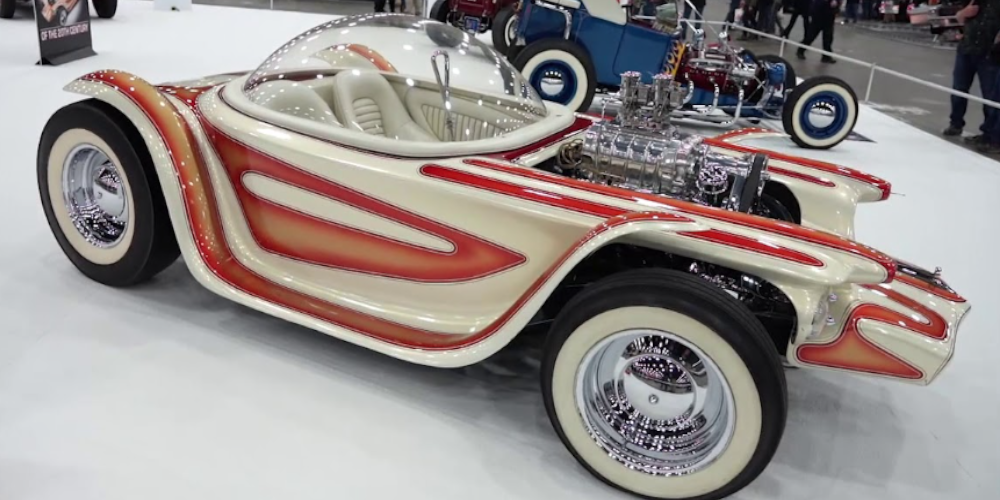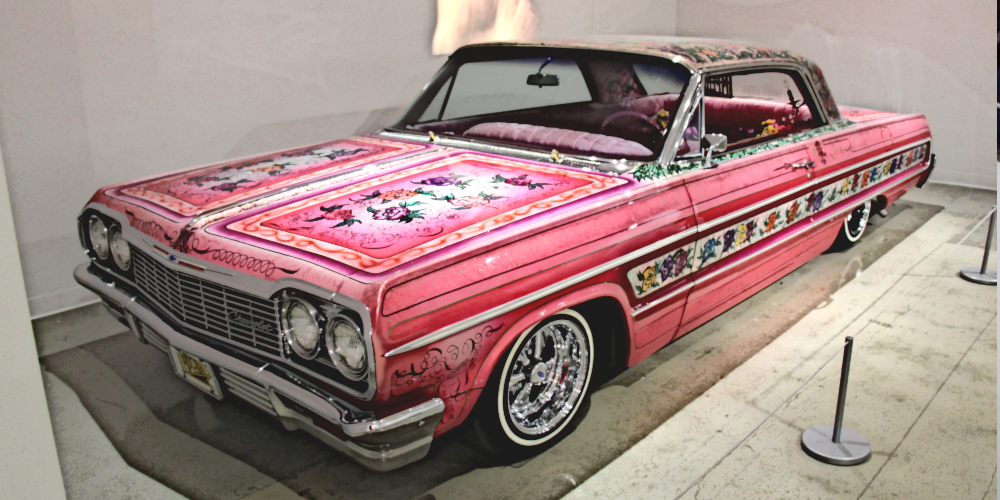Here at EASR, we take everything auto-related seriously – so seriously in fact that we think that the history of our favourite vehicles, and how they came to be, should be celebrated just as much as machines themselves, especially their often-overlooked stories.
If you’ve been following our blog, you may have noticed the first half of our car painting odyssey, starting just before 1924, and rolling into the 1950’s – the basics, if you will! In the spirit of showing how dedicated we are to both our happy customers and their vehicles, the time has come to reveal the second chapter of the vibrant history of auto paint!
Perhaps we need a little catch-up – we’ve followed DuPont’s rise to nitrocellulose power following a fortunate accident in 1921 and traced how the effects of the Second World War affected the use of gun cotton in paints, specifically following sanctions clamped on the defeated axis powers after the victory in Europe. We left off on the developments made in High Solid paint systems developed in Germany and Italy and set the stage for a very different kind of invasion in the US.
Any Colour You Like (1950s-1960s)
In the United States, the symbol of the automobile has transformed in the eyes of both manufacturers and consumers. The purpose of vehicles as simply a means of transportation had transformed into the idea of the car as an extension of the self – a means of expression, style and of social standing. The use of nitrocellulose lacquers, with its inefficient application and drying process, paired with its limited colour pallet meant that it was ill-equipped to suit the needs of the more stylistically motivated auto-industry! Recalling the end of our previous article, the sanctions set in Europe had set in motion the discovery and development of acrylic lacquers, which surely could not have come at a better time.

Fundamentally, the improvements that came with using thermoplastic acrylic lacquers were twofold: firstly, the ability to apply a base coat, before a clear acrylic topcoat, opened the possibility for a far broader spectrum of colours! Secondly, the clear top coat itself had made massive leaps in the protection of the base layer, acting as a powerful shield against UV light that tended to bleach and wash out previous coating methods.
Kustom Kulture (1960s-1970s)
It is difficult to overstate the importance of the development of acrylic painting techniques and how their introduction has shaped the art (yes, art) of auto-painting even up to this very day. By the early 1960s, the creative potential of car manufacturers had expanded, and due to acrylic paints becoming more readily accessible, the car paintwork industry had been extended into the hands of the general public, and custom paint jobs became a viable means of business and a national pass time. In turn, the self-expression that a custom finish of an auto-mobile allowed was granted to more people than ever before.

It is abundantly clear that when a creative tool is made convenient for more people, it is only a matter of time before cultural influences make their mark. It can be seen following the mass production of cameras, and the ensuing art of photography – the same can be said for auto-painting. “Greaser” culture of the 1950s had standardised the modification of motorcycles and cars as a cultural pastime – the rise of drag race culture in the early 60’s further solidified this passion within the hearts and minds of Americans.
The shifting cultural tides of this period, and the new accessibility of auto-paint, left the doors wide open for artists like Ed ‘Big Daddy’ Roth, Dean Jeffries and Kenny Howard (to name but a few) to kick start the wild period of ‘Kustom Kulture’!
The Kontinuation (1970s-1980s)
Never before were the likes of cartoonists, tattoo artists and designers granted access to an entirely new canvas for their work so quickly. The seemingly immediate ability to harness these new painting technologies resulted in an explosion of new styles of auto art, and as Kustom Kulture expanded, newly formed subcultures began to form. The drag racing scene of the 1960s began a new wave of iconographic designs – cars were now beginning to appear as individuals: their names being embellished on their doors and bonnets, some even sporting mascots, like Ed Roth’s ‘Rat Fink’, harking back to the nose art of WWII aircraft.
By the time the 1970s rolled around, custom car culture (or should we say kulture?) was no longer reserved for the racetrack, and the “low and slow” appeal of lowrider culture was springing out of California and hitting the streets of the US. Auto-paint was getting ever closer to being in the hands of more consumers, and improvements made to base coat acrylic, and enamel technologies, along with further durable topcoats, allowed for the iconic metallic-coated, suspension bopping style of ‘lowrider’ cars to take form.

As time drove on, and more subsets and subcultures branched out from under Kustom Kulture’s umbrella, the late ’70s and early 80’s suddenly witnessed a newly affordable renaissance for auto-paint – the price to customise your vehicle was now no longer a luxury worth several months of pay, and the average driver could express themselves with their own designs.
Wrapping Up (1990’s – Present)
It may be clear at this point, that the richness of auto-painting culture, especially after the 1950’s, is far too broad to cram into one post alone – and surely trying to do so would be an injustice in itself. We would rather save the time to explain the ins and outs of our favourite vehicles, for another opportunity to share them in our blog!
The progression of auto-paint has rolled onwards, with an unyielding passion that doesn’t appear to want to stop. The technologies have moved so far in fact, that the paint element of auto-paint has seemingly been removed from the equation. With the development of ‘car wrappings’ that grace the chassis of the most coveted supercars, sporting wild and intricate designs, brilliant colours and sometimes other-worldly metallic and pearlescent shimmers! But perhaps that is an opportunity for another auto-history lesson?
We provide expert vehicle & car paintwork repair services in Norwich
Discover our premium vehicle and paintwork repair services. Our Norwich body shop uses expert techniques to make your car look brand new, ready to hit the road with confidence. We are not only motivated but passionate about how your vehicle represents you. Our cosmetic, and mechanical solutions are tailored to you! Besides repairing any paint damage that may come to your vehicle, we also offer:
To get a quote from our vehicle experts, you can fill out our online form, or call us 01603 551182.